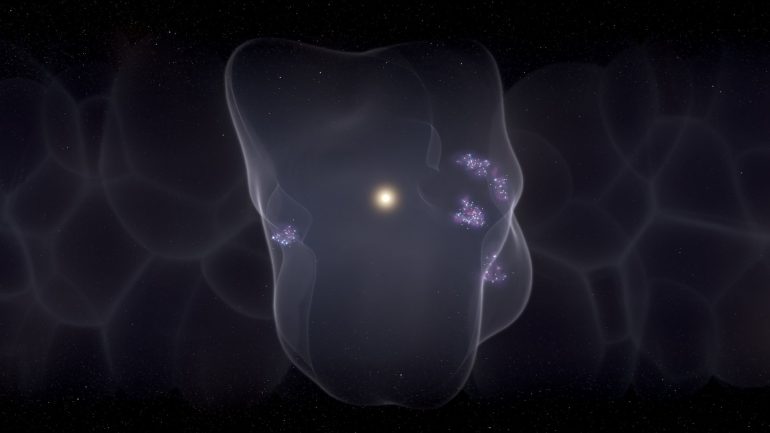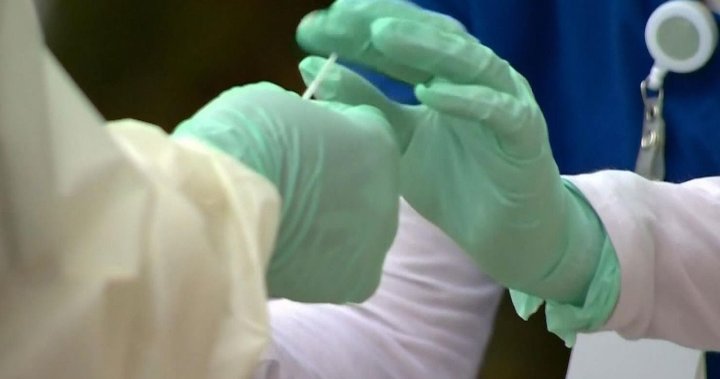Our solar system lies in the middle of a relatively empty region of space: in a “local bubble”. There are also fewer atoms and molecules here than in the rest of the space between stars. Astronomers have now figured out how this bubble – with a diameter of about a thousand light years – came into existence and how it evolved over time. Accordingly, this region was formed by the force of several star explosions several million years ago and continues to expand today. According to scientists in the journal “Nature”, there are probably many similar bubbles in the galaxy.
“We’ve known for decades that our solar system is located in a thin and hot gas-filled region,” explains Katherine Zucker of Harvard University in the United States. “Until now, it was unclear how and when the local bubble formed.” The scientist and his team have now evaluated data from the European Gaia space telescope to develop an accurate model of this structure. This showed that almost all star formation regions are located within 500 light-years of the surface of the bubble. And the stars formed there always move outward – the bubble is clearly getting bigger, the researchers conclude.
Using the motion of the stars, Zucker and his colleagues calculated that the bubble formed about 14 million years ago. “At that time there would have been about 15 supernova explosions in this region,” Zucker says. The high-energy radiation from these stellar explosions blew off the surrounding gas, forming a bubble. On the expanding surface of the bubble, the pressure of the explosions pushes the gas closer together, forming new stars. This process continues today: the team identified seven star formation regions on the surface of the bubble, which are still expanding at a rate of about seven kilometers per second. “This enables us to explain for the first time what triggered the formation of new stars around the Sun,” Zucker reports.
By the way, our Sun is not a part of this process. When the first stars burst in this region, it was still far away. It was only about five million years ago that our solar system had entered the interior of the bubble in its orbit through the Milky Way. Today the Sun is roughly in the middle of the structure. A stroke of luck for astronomers, as they can study the local bubble in great detail from this position. In the future, Zucker and his team want to search for similar bubbles in the Milky Way and investigate whether different bubbles touch each other and how they affect each other. Much more remains to be learned about the role of these regions in galaxy evolution.

Internet fan. Alcohol expert. Beer ninja. Organizer. Certified tv specialist. Explorer. Social media nerd.





